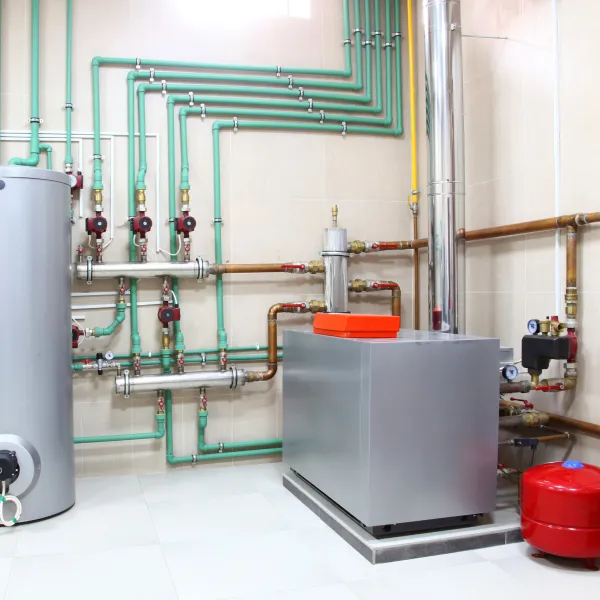A boiler and a furnace are different types of central heating units, but boilers use water while a furnace uses air.
Boilers use hot water or steam to warm your house. The water or steam travels through pipes or radiators and warms the objects in your home.
Furnaces blow hot air through a duct system, which warms the air in your home.
How Does a Central heating boiler Work?
A fuel source such as natural gas enters your home and travels to the boiler. The gas comes out through small jets where it's ignited and turned into a heat source. The heat from the ignited gas goes through the heat exchanger, which warms a water pipe or tank of water.
If you have a hot water boiler, the hot water will travel through the pipes in your floor radiators with the help of a motorized pump. Once the water has heated the room, it travels back to the boiler to get reheated.
If you have a steam boiler, the heat exchanger will continue heating the water until it turns to steam. The steam will rise to the radiators in your home. Once it's heated the room, the steam turns back into water and returns to the boiler to start the process again.
If you can't visualize the cycle, a how a boiler works diagram might help.
The burning fuel produces combustion gases which the venting system takes out of your home. Without this vent, you'd have a buildup of dangerous carbon monoxide gas.
Different Types of Residential Boilers
While the application of boilers in your home is always the same—they all provide central heat—there are three types of boilers.
Gas fired boilers use natural gas or propane but are not an option if you don't have access to natural gas. Oil fired boilers require a regular supply of oil which you'll need delivered to your home. Electric boilers are very efficient but are expensive given the high cost of electricity.
There are also three types of radiators, which bring heat into each room. Steam radiators are larger metal units you might've noticed in older homes.
Hot water radiators are small and sit along the baseboard of each room. Hydronic radiant floor heating uses a network of coils to warm the floor of each room.






